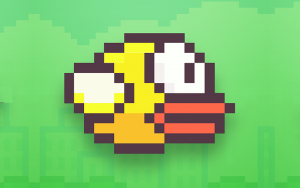GDC 2019: Deconstructing Idle Miner Tycoon
Michail (Miska) Katkoff and I spoke at GDC this year, deconstructing two games we felt have shifted design in the mobile market since last GDC. Miska took on Brawl Stars, while I deconstructed a game called Idle Miner Tycoon.
Here are our Slides:
- The big question surrounding Idle: is it ready for larger developers to start moving into
the space ?- What has started off as a niche market, has gradually formed into a contender on the AppStore. Allowing smaller companies (East Side Games, Futureplay, Kolibri Games) to grow successful businesses in a very mature mobile marketplace.
- Where the market was flatlining in 2015-2016, has had a resurgence from 2016 to 2018, increasing in overall downloads and revenue.
- 3 Trends have driven that:
Movement to Hyper Casual games which use Idle as a retention mechanic (ex. Fishing Inc, Merge Planes)- Trailer Park Boys’ use of Gacha and Narrative
- Kolibri games deeper, simulation focused Idle Miner Tycoon
- But Idle is still a niche market when looking at the greater marketplace
- Regardless, Kolibri games started in 2016 has created two strong idle games, and currently makes roughly $200,000 per day from them
So how did Idle Miner Tycoon do it?
- Scalability
- There game aimed to fix the visual progression problem with Idle games: that after a few
prestiges , the game starts to feel the same all the time.- They invested in making sure that the core gameplay scaled, and was always addictive to strategize over which upgrade will be best for progress (rather than a simple upgrade system)
- They invested in new visual mines, giving you a reason to progress
- They didn’t force you to fully prestige unless you absolutely wanted to — you can expand to many mines but always keep your original.
- My Take: Idle games should take note of the visual changes necessary to drive a new style of engagement. Moving towards this simulation style game did a lot for driving more sustainable long lasting engagement. Going towards a 2D grid placement (isometric) almost feels inevitable now due to what it can do for creating compelling strategies that drive longer engagement.
- There game aimed to fix the visual progression problem with Idle games: that after a few
- Marketability
- Looking into the case of Idle Farming Empire (previously known as Farm Away)
its clear that Kolibri stumbled on a visual style which resonated with the Idle game audience. - Their CPI managed to be significantly lower than competitors, despite going for the same audience, meaning they could grow their game significantly faster.
- Looking into the case of Idle Farming Empire (previously known as Farm Away)
- Live Ops
- There is a clear inflection point in their revenue as they integrated more with their events system. Offering limited-time mines for rewards.
- My Take: This was a good implementation but limited in its impact. It was enough to drive the game’s success, but looking at the market it is clear that they have room to grow in terms of what the outputs are from events)
But overall, can Idle actually expand? Can Idle grow to larger players? Most likely not within 2019. My prediction is that it will remain with smaller developers, simply because of the caps on the audience that exist so far. However, there are 3 clear areas of growth that a small or mid-sized developer can take advantage of:
- Broadening Audience
- Hyper Casual games have integrated idle style economies into vastly different core gameplay, opening up new audiences to Idle. If Idle can find a way to bridge the gap, they can drive a wider initial funnel into a strongly retaining core gameplay.
- Simulation Focus
- Kolibri
have proven that simulation style mechanics can work within Idle. Doubling down on this there is plenty of design space to move towards the SimCities and Civilization space. Use common themes, but scale as well as Idle Miner.
- Kolibri
- Live Operations Maturity
- Idle Miner is leaving plenty of money on the table by going with such light events. Developers that can find similar audiences have the opportunity to drive more overall engagement and revenue if they can create the game such that events are more core to the economy (ex. that Gacha components are actually rare and useful to overall progression)





